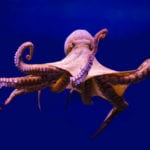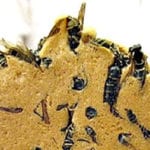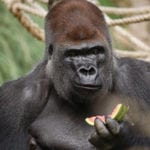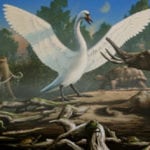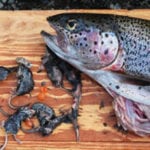 Miscellaneous
Miscellaneous  Miscellaneous
Miscellaneous  Humans
Humans 10 Ideas That Scare People to Death
 Music
Music The Cursed Decade: 10 Classic Rock Stars Who Had Low Periods in the 1980s
 Health
Health 10 Crazy Ways Sleep Deprivation Can Affect You
 History
History 10 Enthralling Facts about the Field of Cloth of Gold
 Pop Culture
Pop Culture The Ten Greatest Engineers in Science Fiction History
 Humans
Humans Ten Journalists Who Got Caught Faking the News
 Travel
Travel 10 Best Hiking Trails in America with Breathtaking Views
 Weird Stuff
Weird Stuff The 10 Weirdest Materials That Can Be Used to Make Paper
 Crime
Crime The 10 Most Infamous Gangs in History
 Miscellaneous
Miscellaneous Ten More Extremely Unexpected U.S. State “Firsts”
 Humans
Humans 10 Ideas That Scare People to Death
 Music
Music The Cursed Decade: 10 Classic Rock Stars Who Had Low Periods in the 1980s
Who's Behind Listverse?

Jamie Frater
Head Editor
Jamie founded Listverse due to an insatiable desire to share fascinating, obscure, and bizarre facts. He has been a guest speaker on numerous national radio and television stations and is a five time published author.
More About Us Health
Health 10 Crazy Ways Sleep Deprivation Can Affect You
 History
History 10 Enthralling Facts about the Field of Cloth of Gold
 Pop Culture
Pop Culture The Ten Greatest Engineers in Science Fiction History
 Humans
Humans Ten Journalists Who Got Caught Faking the News
 Travel
Travel 10 Best Hiking Trails in America with Breathtaking Views
 Weird Stuff
Weird Stuff The 10 Weirdest Materials That Can Be Used to Make Paper
 Crime
Crime The 10 Most Infamous Gangs in History
10 Ways Animals Are Geniuses
In 1960, Jane Goodall shook up the human view of primates when she discovered a chimpanzee stripping twigs and poking them into termite mounds so that he could fish out tasty bugs for dinner. Up until this time, it was accepted that man was the only animal that made tools, but now humans had to share kudos for that ability with chimps. Of course, that was just the beginning.
As more researchers have observed and interacted with animals, humans have definitely been humbled. Despite all the millennia that we have shared the planet with other creatures, we seem to be constantly discovering that they can do many things we thought only humans could do—or that they can do things humans only wish they could imitate. Here are some fascinating accomplishments from our non-human neighbors.
10Dolphins Can Make Their Own Toys
Young bottlenose dolphins love to play, and they can even make their own toys for that purpose. They make bubble rings that are sparkling, beautifully formed bubble versions of smoke rings that a human might make. But bubble rings are fashioned with much more skill.
First, the dolphins use their fins to whip up the water into currents and they agitate it until it forms a whirlpool. Then, they blow bubbles by shooting air out of their blowholes and into the water. This sends those bubbles into the center of the spinning whirlpool. The result is a round bubble ring around a hole in their center.
These bubble rings keep their shape so that a dolphin can play, sometimes swimming through the ring as if it’s a hoop or creating several rings to join together. Sometimes, they just use their noses to move the rings around just like kids enjoy rolling a ball.
Dolphins learn to create their best bubble toys through experimentation. For example, to join two bubble rings together each one must be perfect, and dolphins experiment until they judge a bubble ring is perfect enough for them to play the game of joining it to another ring. This experimentation and use of judgment is just another example of bottlenose intelligence, and so is their versatility in making toys and playing with them. According to the admiring dolphin researcher Dr. Ken Marten, dolphins are such experts at using hydrodynamics to create their bubble rings that they could be “professors of fluid mechanics.”
9Orangutans Practice Piracy

Camp Leakey in Borneo is a wildlife refuge. It was established in 1971 with the object of observing orangutan behavior. Because the orangutans are protected at Camp Leakey, they’ve been able to safely study the humans who’ve been studying them, and they often outwit them. They’ve also learned to imitate human activities (from brushing their teeth to boating) and teach them to one another.
Anyone who uses dugout canoes to travel along the waterways near Camp Leakey is always careful to secure their boats carefully. But whether they tie their boats to the dock with double or triple knots, the orangutans manage to learn how to steal them. One canoe owner decided to fill his boat with water, sinking it into the shallows so the apes would think it wasn’t usable. An orangutan simply rocked the canoe from side to side, spilling out the water until the canoe was floating on the surface again.
Pirating orangutans have no problem figuring out what to do with their booty since they’ve also learned to be capable skippers. They use their long arms to paddle, piloting the boats to their desired destinations and then abandoning them. The apes have even been known to use the canoes to pull alongside fishing boats and steal traps full of fish.
It’s been said that orangutans are as clever as three-and-a-half-year-old children, but what does that say about the humans they outwit in order to take their boats for transportation? Especially those Camp Leakey scientists with PhDs?
8Snakes Predict Earthquakes
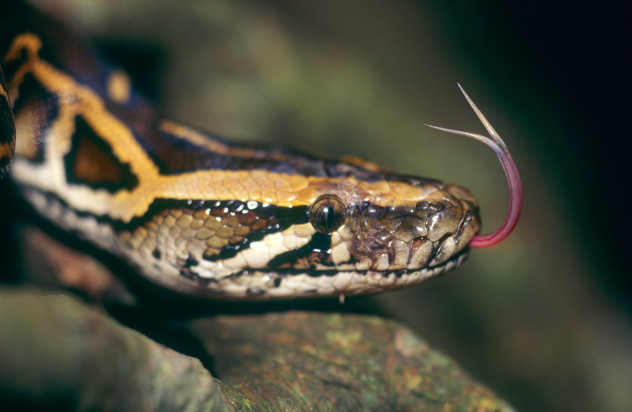
Geologists have a tough time predicting earthquakes. But the Nanning Earthquake Bureau has found some critters that do the job. It has used 24-hour webcams to monitor over 100 snake nests on local snake farms in the Guangxi province of China where snakes are raised as food.
Scientists at Nanning monitor the cameras in case the snakes exhibit any erratic behavior. The reason? Nanning is an area subject to earthquakes and the local geologists have found a correlation between sudden predictive behavior on the part of snakes and the approach of an earthquake.
According to Jiang Weisong, head of the Nanning Earthquake Bureau, “When an earthquake is about to occur, snakes will move out of their nests even in the cold of winter. If the earthquake is a big one, the snakes will even smash into walls while trying to escape.” Using the webcams, Nanning scientists have seen snakes exhibiting attempts to escape their nests up to five days before an earthquake occurs. The snakes have sensed earthquakes up to 120 kilometers (75 mi) away.
How do the snakes do it? That seems to be still open for discussion. Snakes are sensitive to vibrations, so perhaps they perceive seismic vibrations before earthquakes. They can also perceive thermal variations through their ability to use infrared. So, they might be sensing the infrared changes caused by the movement of tectonic plates just before earthquakes.
7Humpback Whales Developed Advanced Water Technology
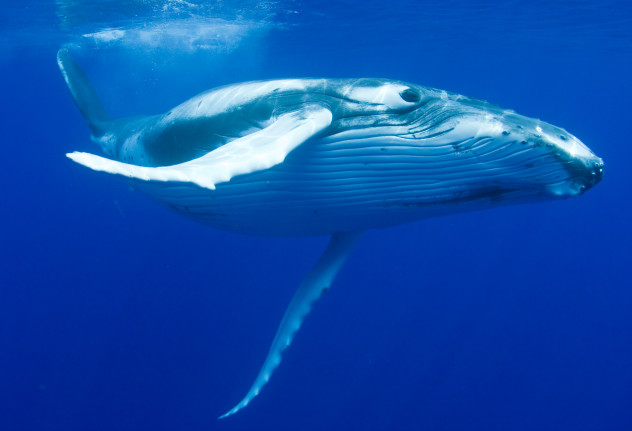
Humpback whales are about 14 meters (46 ft) long, but these enormous animals feed on very small prey like krill and herring. When humpbacks need to eat, they can devour thousands of pounds of prey. The whales have “baleen plates” instead of teeth. The whales eat by swallowing enormous amounts of fish and sea water, and the baleen plates act like strainers to let the whales then spit the water out while retaining their fish food. What’s even worse for schools of small fish, the whales are amazing fishermen having developed what scientists have called “advanced water technology” to trap their prey.
Humpback whales in different locations use slightly different techniques but, in general, the whales fish in teams of at least two whales and usually more. They will dive to find a large school of fish. Then, some whales circle below and use vocalizations to panic the fish and send them toward the surface, and one whale creates clouds of tiny bubbles with his blowhole. While blowing the bubbles, this whale will swim in upward spirals creating a circular curtain of bubbles that herds the small fish into one central location. In effect, the whale has created a bubble net that keeps the fish from dispersing because they won’t cross that bubble curtain.
With the water’s surface above them, the humpback whales below them, and the bubble net surrounding them, the prey have no way to escape their fate as food. The whales take turns breaking toward the surface of the water through the center of their bubble net. They keep their large mouths open to swallow all the fish they can in one lunge. When the feeding is finished, the whales simply seek another school of small fish and create a new net with their advanced water technology.
6Vervet Monkeys Can Make Humans Of Themselves
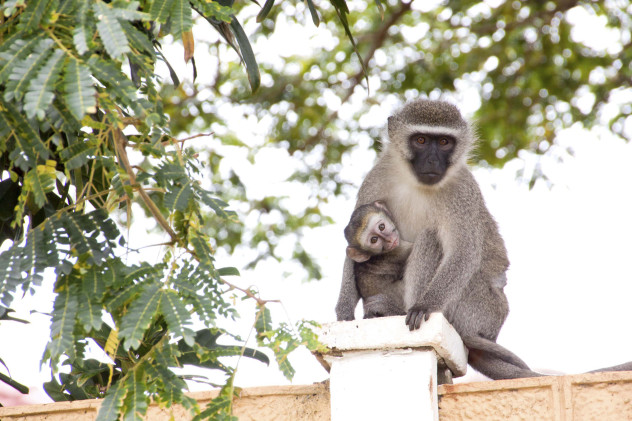
Ever wish you were such an attractive and charming party animal that everyone wanted to entertain you just to watch you swing from the chandeliers? That’s how it is with the vervet monkeys on St. Kitts Island in the Caribbean. With their olive gold fur and black faces (not to mention their unique partying ways), these animals have captivated international tourists to become a renowned island attraction.
St Kitts’ vervet monkeys are the descendants of escaped pets who originally arrived on slave ships from West Africa. The monkeys often raided sugar cane fields and ate the leftover stalks of sugar cane that had fermented. It’s said the fermented cane juice gave them a taste for alcohol because the monkeys of St. Kitts are famous for pilfering tourists’ drinks. They’ve been known to hang out near beach bars where, if a tempting cocktail is neglected or unfinished, they climb down from trees to swig it for themselves.
Some monkeys get so drunk they stumble around the beach, but tourists seem to find them cute even when they’re completely inebriated. In fact, some beach bars have found that drunken monkeys can attract business. Even other monkeys find the heavy-drinking monkeys attractive in the sense that they look up to them as leaders.
Drunken vervets have also attracted scientists. A study of the St. Kitts’ monkeys—who share 96 percent of their genes with humans—revealed that these monkeys party like people. Like humans at cocktail parties, some monkeys get merry while others get angry, still others get promiscuous, and a few are busy getting bombed.
Even vervet drinking statistics match those of humans: 15 percent of vervets and humans are teetotalers, 65 percent are social drinkers, 15 percent are serious drinkers, and 5 percent are binge drinkers who imbibe until they pass out. And, like human alcoholics and humans suffering from depression, serious drinkers in the monkey population suffer from an abnormally low amount of feel-good dopamine when they are sober. The similarities in human and vervet genetics and brain chemistry are leading to new ideas about dealing with alcoholism. However, activists protest that making lab monkeys act like human drunks is a form of animal abuse that should end.
5Bearded Dragons Got Game
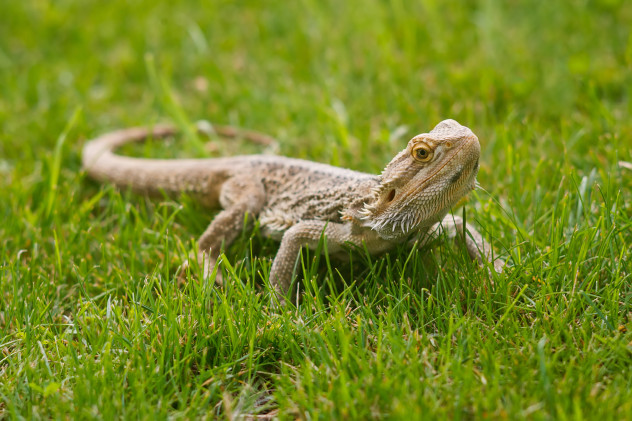
Are you good at Ant Smasher? That’s the oh-so-popular video game where you quickly squash ants with your finger while avoiding pesky bees. If you are an excellent smasher of ants, you might want to compare your speed and accuracy with a true champ at the game, the Pogona vitticeps—commonly known as a bearded dragon.
Bearded dragons are large lizards from the Australian desert. They are called bearded dragons because they have a scaled dewlap of expandable skin on their throats which is said to resemble a beard. In captivity, bearded dragons usually eat crickets or worms or even roaches, but of course they have a natural hankering for any tasty bug, including ants. Phillip Gith of Australia watched Crunch, his female pet bearded dragon, snap up bugs with her tongue and he wondered how she’d do at Ant Smasher.
Gith soon learned that Crunch was a natural at playing Ant Smasher on his phone. When ants walked across the screen, Crunch’s tongue would lash out, hit them, and remove them from the phone screen. Crunch’s tongue was so fast and accurate (though she did hit the occasional bee) that Gith decided to record her skills in a brief video that soon went viral on the Internet.
Peter Harlow, manager of reptiles at Australia’s Taronga Zoo, believes bearded dragon lizards excel at the video game of Ant Smasher and respond to visuals on video screens because they rely on their excellent eyesight to hunt tiny insects. However, the scientist warns that the lizards probably won’t do Ant Smasher forever since it’s obviously not a good food source.
Harlow surmised that while no other species of lizard would be champs at Ant Smasher, other bearded dragons besides Crunch would likely enjoy the game. Sure enough, other videos of dragon lizards enjoying Ant Smasher have popped up on the Internet.
4Crocodiles Surf The Endless Wave

Saltwater crocodiles or “salties” can be the stuff of nightmares. They are the world’s largest living reptiles. They can grow over 7 meters (23 ft) long, weigh over 900 kilograms (2,000 lb), and their jaws can apply 900 kilograms (2,000 lb) of pressure. These crocs are deadly predators on land and in the water. They can take on sharks and aluminum-hulled boats filled with humans—and win. When you think of a laid-back surfer dude hanging 10, these swimming Godzillas aren’t likely to be the first image that comes to mind.
But, in February 2014, West Australia’s popular Cable Beach was closed after a happy 4-meter (13 ft) crocodile was discovered. It wasn’t munching on beachgoers—it was riding the waves. That croc at Cable Beach was just doing what comes naturally. Researchers have discovered that these huge reptiles may be poor swimmers, but they are rad surfers.
Scientists began following the movements of crocodiles with sonar and satellite tracking to try to figure out how why the crocs (which can’t swim long distances) have been able to establish themselves on a large swath of South Pacific territory and islands that range from eastern India, throughout southeast Asia, and northern Australia. The answer is that the crocs can travel up to hundreds of miles by body surfing on river or ocean currents—just like surfers might ride an endless wave.
Their ingenious long-distance travel methods include perfect timing of tide changes and tidal currents. But we humans still haven’t found out all the secrets of these scaly surfers. For example, what is the purpose of these trips? One clue is that crocodiles can use the currents to meet up with (and gulp down) large schools of fish on their annual migrations. It seems these deadly monsters really know how to enjoy life by taking a great surfing vacation complete with dining out.
3Shrews Walk On Water
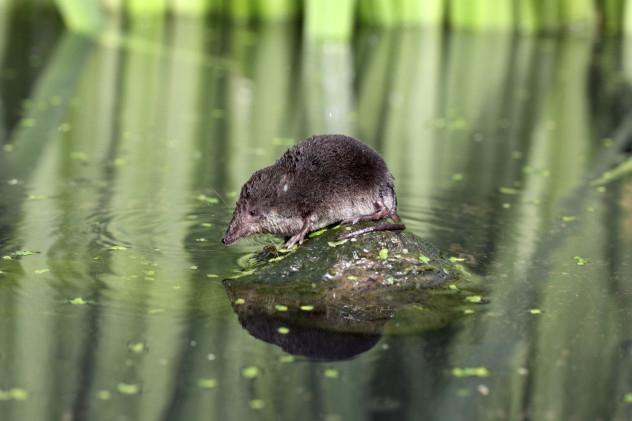
As far as humans are concerned, walking on water has been placed in the category of miracles. But there is one little animal who is showing us how it can be done. Water shrews are mouse-sized and typically 12-15 centimeters (5-6 in) long. These mammals live close to rivers, streams, ponds, or boggy lands because they spend so much of their time in water.
These animals are best known for their constant need to nosh; they can eat their own weight in food every 24 hours and have such a fast metabolism that they can starve to death if they miss a meal for several hours. What isn’t well known about water shrews is their Jesus-like ability to run on their hind feet on top of the water for distances of up to 1.5 meters (5 ft).
The secret to the water shrew’s ability to scurry over streams without sinking can be found around their feet. Stiff fringes of hair grow around their hind feet and their back toes. These stiff hairs trap bubbles of air, and the collections of bubbles are like tiny air rafts making the shrews buoyant and allowing them to run across the surface of water rather than paddling through it.
Humans have taken advantage of the water shrews’ bubbly concept with hydrofoils. These motorboats create and zip along on a layer of bubbles. This enables the boats to speed more than they could if they were plowing through water which has a slowing or “drag” effect. Now, if only we could do that for footwear.
2Killer Whales Can Speak The Foreign Language Of Bottlenose
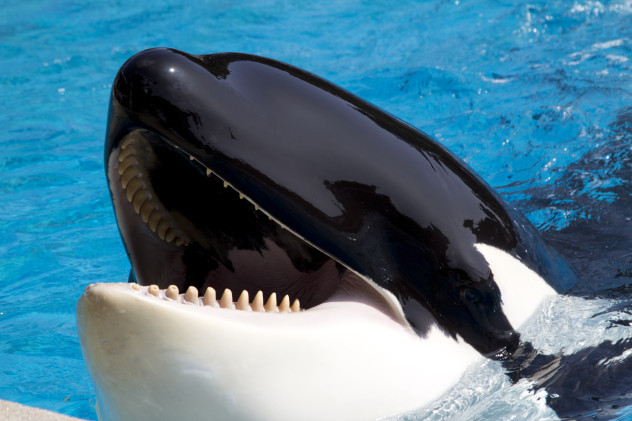
How good are you at learning foreign languages? Even if you’re an expert, have you ever communicated in the language of another species? It would be great to be as accomplished at that skill as a killer whale.
Killer whales are actually the largest members of the dolphin family. They are a different species than bottlenose dolphins. However, killer whales (orcas) can listen to bottlenose dolphins and learn to imitate the dolphins’ “speech.” It may even be that they use this new dolphin-speech to socialize across species. Scientists call the ability of orcas to speak bottlenose cross-species vocal learning.
Killer whales usually speak to one another with a series of clicks, whistles, and pulsed calls. Pulsed calls dominate their communications. Bottlenose dolphins use far more whistles and clicks to communicate. At Sea World, when killer whales were kept in captivity with dolphins for years, researchers found that their speech changed. The whales now used a majority of whistles and clicks, just like those of the dolphins who were their pool mates and whom they now socialized with.
Orcas can do more than just learn a new way to communicate in clicks and whistles that come naturally. They can also learn new sounds. Before the arrival of the killer whales, some of the dolphins had been taught by a trainer to “speak” in a series of chirps. The killer whale heard the chirps of the dolphins and learned to imitate them without any human training. In addition, a killer whale has been known to imitate the calls of seals. It’s a nifty trick since seals are often hunted by the big dolphins.
Scientists have said that the ability of orcas to adapt to the language of others is indicative of their abilities as social learners. It also indicates that they have exceptional neural plasticity, meaning that their brains can grow new neural connections as the animals learn new behaviors. The learning and brain power of orcas is likely to be added to the list of reasons to protect the species and also to stop keeping them locked up in the tanks of entertainment parks like Sea World where their lives are said to be greatly shortened.
1Golden Orb Spiders Can Put Rumpelstiltskin To Shame
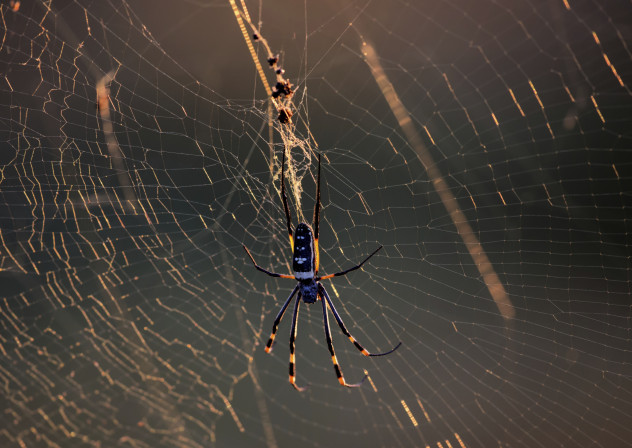
This last amazing feat shows what combining animal and human technology can do. The island of Madagascar is home to millions of golden orb weaver spiders famous for their webs. The webs can be as large as 1.8 meters (6 ft), and they can last for years because these spider silk threads are the strongest spider silk in the world. The golden orb spiders produce a liquid protein in their abdomen and with their spinnerets. They actually rearrange the liquid protein’s molecular structure in order to turn it into silk.
Scientists have long tried to duplicate the silk in the laboratory because it is so strong and flexible it could be used to make everything from bulletproof vests to artificial tendons for medical purposes. But, though the strength of spider silk is of interest to scientists, its remarkable beauty has attracted artistic craftsmen.
Two textile experts wanted the world to see the beauty of the silk that golden orb spiders create. To make a cape, these dedicated spider-silk-lovers re-worked a process to milk the spiders for silk without harming them—a process that’s over 200 years old. Then, over one million 5-centimeter (2 in) golden orb spiders were milked to produce the necessary threads.
In 2012, an elegant embroidered cape completely fashioned from golden orb spider silk went on display at London’s Victoria and Albert Museum, which is known for its exhibitions of important textiles. The cape is an exquisite piece of haute couture. And it isn’t sticky! Instead, the beautiful spider silk threads have created a garment so lightweight and delicate that visitors couldn’t feel anything when the cape’s tassels were placed in their hands.
But perhaps the most striking element of the cape is its sun-bright golden color—the natural color of the silk that these spiders produce for their webs.
Sue Steiner is a frazzled mom and the author of Uncle John Presents Mom’s Bathtub Reader. She’s also the author of the upcoming book, Amazing Moms Who Changed The World. You can reach her here.


